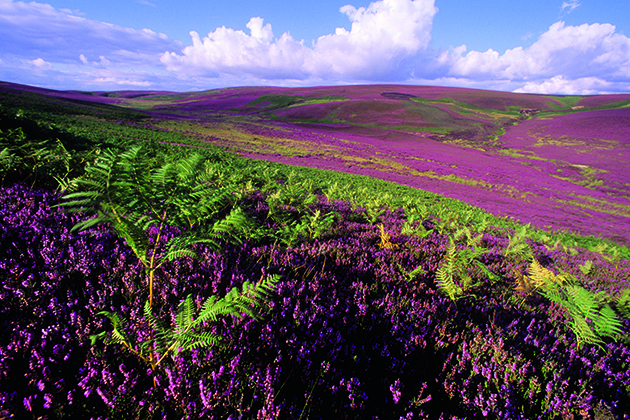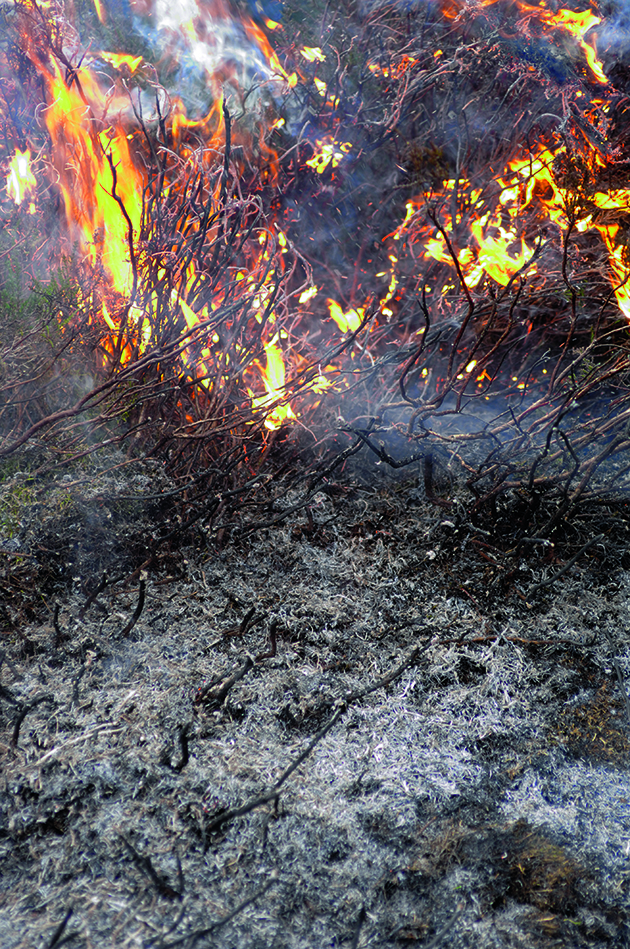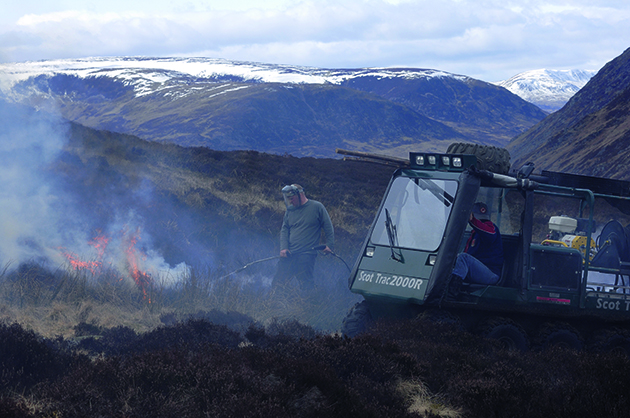Win CENS ProFlex DX5 earplugs worth £1,149 – enter here
Burning heather: an issue of moorland management

Why do we burn heather moorland?
The practice of muirburn – or burning heather, as it’s more commonly known by the practitioners -is extremely old. It was originally done to produce fresh grazing for animals, as it still is over huge swathes of the planet, though not on heather moorland. In Britain, the practice was refined considerably from 1850 onwards, as management for grouse became the norm on many moorland areas. The practice has come under considerable scrutiny and criticism in recent years, with claims that it leads to discolouration of water, as well as increasing the run-off from the moors, contributing to flooding.
It was not just the higher altitude moors that were burned; the lowland heaths were also burned on a regular basis for grazing. It is the cessation of this, coupled with the lack of grazing, that has led to many heaths becoming overgrown with scrub and tree cover, leading to the loss of rare flora and fauna.
Sadly, though we love heather, one of the problems of mature plants is that it, like a conifer plantation, tends to smother almost everything else. One of the real benefits of burning is that it opens the canopy, allowing a whole generation of plants — sundew, cow wheat and many more — to flourish for a while until the heather becomes dominant once more. The rather more open areas are also used by reptiles, especially common lizards, to bask in the sunshine.

Heather moorland that is burned does not become overgrown and can therefore support flora and fauna
What, where and when
As someone who has burned a fair share of heather in his time, there will be those who will say I may be biased on the subject. However, I have always viewed everything I have done with an open mind, and I have yet to see evidence that any of the above criticisms is true if the burning is done in the correct manner.
The actual burning itself is not complicated; what is vital, though, is knowing what light, where and when to light it.
Wind speed and direction, moisture content, stopping places for the front of the fire — all come into play when the decision is made. Heather in the autumn behaves in a completely different manner to heather in the spring, when the moisture content of the plant is far lower. The moorland grasses, which may well stop a fire in the autumn, will allow the fire to flash over them in the spring. There is so much to consider, and much of it down to experience.
For most keepers, especially in England, there is much more to take into consideration as well. Other than the fact that there is a “season” set out in law, from 1 October until 15 April, the majority of grouse moors carry a designation — Sites of Special Scientific Interest, Special Protection Areas and Special Areas of Conservation — and they will all have a management plan for the moor. These in themselves are complicated, with one piece of a jigsaw overlaid on another, and this is something many critics of burning fail to take into account.
A vegetation map is overlaid on to an altitude map, then many other features, such as peat hags, scree areas, watercourses, archaeological remains and more, are added. This creates a complicated picture of the moor, which carries with it varying burning rotations for the differing parts. Some are complete no-burn areas, whereas there will be some that can be burned around a 10-year period, maybe even less at times. So for many it is a highly regulated job with returns of the area and vegetation type burned every year submitted to Natural England at the season’s end.

Water bowsers are used to control the fire
Reducing risk
This is not the only thing that has changed in the past 160 years or so. Within the plan, most moors can only burn fires up to a certain maximum size. As an aid to this, the vast majority of those who undertake the muirburn are now using high horsepower tractors with a flail mower to define the edge of the fire, as well as water bowsers fitted to ATVs with misting or pressure jets to aid control. This has the advantage of keeping the fire to an exact size, as well as reducing the risk of any runaways. There is an excellent reason for using fire as a tool to regenerate heather. Fire, in moderation, acts as a stimulus to heather seed, opening up the canopy and allowing the light to propagate the seedbed, and is used thus in a number of plant communities round the world.
The current, and sensible, best practice is for cool fires, not done when too dry nor with too little wind, because then the fire is slow and creates too much heat over the ground. It is better to have a fire going quite fast, as the flames come and go quite quickly. There is also now an agreement in some areas where sphagnum moss can be seeded on to burned areas in an attempt to create a better habitat. Much of this moss layer was lost during the Industrial Revolution when pollution killed off huge areas of it and reduced the protection afforded to the peat surface.
It is a far cry from when you lit it and followed the edges of the fire, knocking the flames out with a pole fitted with rubber belting or similar — they were hard days indeed.
As with most jobs, man has not carried on with this practice because he felt like it. The moors are still an important area for grazing animals and they do like fresh growth, shunning old, unpalatable heather. Many of the moorland birds, especially waders, prefer open areas on which to nest, and, contrary to popular belief, many grouse nests are sited in small patches of dead vegetation left behind by the fire. There is safety in being able to see around you, and it is almost impossible for even the smallest predator, stoat or weasel, to cross a fire covered in brittle heather sticks without making a noise.
Related Articles
Get the latest news delivered direct to your door
Subscribe to Shooting Times & Country
Discover the ultimate companion for field sports enthusiasts with Shooting Times & Country Magazine, the UK’s leading weekly publication that has been at the forefront of shooting culture since 1882. Subscribers gain access to expert tips, comprehensive gear reviews, seasonal advice and a vibrant community of like-minded shooters.
Save on shop price when you subscribe with weekly issues featuring in-depth articles on gundog training, exclusive member offers and access to the digital back issue library. A Shooting Times & Country subscription is more than a magazine, don’t just read about the countryside; immerse yourself in its most authoritative and engaging publication.







